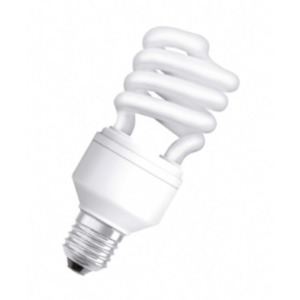10 things you probably didn't know about light bulbs
Here are then things that you may not have know about the humble light bulb...
- Brazilian football legend Pele was named after light bulb pioneer Thomas Edison. The name Pele was actually a childhood nickname and his real name was Edson Arantes (his parents dropped the ‘i’).
- 2015 is the Year of International Light, which aims to celebrate all light-based technologies. Events include ‘Beyond the Bulb’, held in Austria this week to look at what light can do and how we can use it.
- Incandescent light bulbs – based on technology pioneered by Edison and Joseph Swan almost 150 years ago – lose up to 90% of their energy through heat.
- LED bulbs (light emitting diodes) are 80% more efficient than incandescent light bulbs. Last year, the Telegraph estimated a household could save £240 a year by replacing all old light bulbs with LEDs, taking into account the fact that LED lights cost more to buy but last a lot longer.
- Electroluminescence – the basis on which LEDs work – was discovered by a British colleague of Marconi’s in 1907. Unfortunately, he was about 50 years ahead of his time!
 The world’s biggest blackout occurred in India in 2012, when a power grid broke down. About 620m people were left in the dark for days, sweltering due to the lack of air conditioning, whilst failed traffic lights led to chaos on the roads and hospitals had to rely on generators.
The world’s biggest blackout occurred in India in 2012, when a power grid broke down. About 620m people were left in the dark for days, sweltering due to the lack of air conditioning, whilst failed traffic lights led to chaos on the roads and hospitals had to rely on generators.- We think of renewable energy as a new idea, but it was pioneered more than 150 years ago by Lord William Armstrong. His Northumberland home, Cragside, was the first in the world to be lit with hydroelectricity generated from the lakes on his estate and, following the installation last year of a 17-metre screw, the National Trust property now relies on hydroelectricity once again to light its 350 light bulbs!
- The red LED was discovered in 1962 but the blue LED - vital in creating the white lights used in so much of today’s technology – was to elude scientists for another 30 years!
- There are estimated to be 600 million light bulbs in the UK – that’s an average of 25 per home!
- Without the 1973 oil crisis, the CFL – compact fluorescent light – might never have been invented! During the energy shortage, light developers saw the need for a fluorescent bulb and in 1976 a General Electric worker called Edward Hammer worked out how to bend the fluorescent tube into a spiral shape. But GE abandoned his design as it was too pricey to mass-produce!